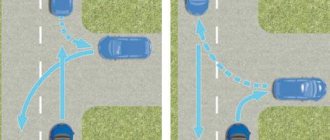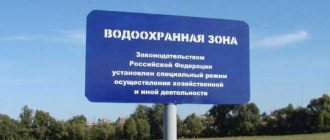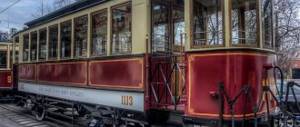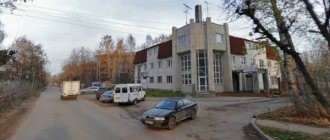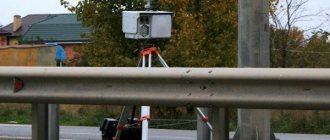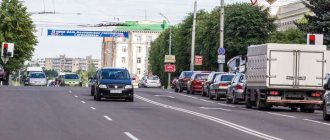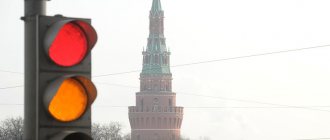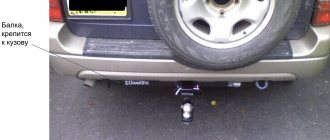Crossing intersections is always accompanied by conditions of increased danger, especially in the city with dense traffic flow. Traffic police inspectors also pay close attention to road connections, finding errors and violations in the actions of drivers. But even without intersections, movement is impossible, which means you need to know all the details of possible maneuvers.
This article will be devoted to turns and U-turns at an intersection: how and when they can be carried out, and when the maneuver becomes a violation of traffic rules, and in some cases so serious that the driver’s license may be deprived.
- Optimal turning trajectory
- At a controlled intersection (with traffic lights)
Is it possible to turn around at an intersection?
A U-turn at an intersection is permitted if its prohibition does not directly follow from road signs, markings or prohibiting signals at a controlled intersection.
However, “allowed” does not mean “possible under all conditions.” It is the methods of performing U-turns that are the reasons for the emergence of claims from the traffic police.
How does an intersection differ from the intersection of roadways?
Before moving on to the methods of correct and incorrect turns/turns, let’s look at the definitions. Let's start with the fact that the concepts of “intersection” and “intersection of roadways” may not coincide. This is extremely important because... The traffic rules in paragraph 8.6 clearly indicate the possibility of turning within the intersection of roadways without entering the lane(s) of oncoming traffic.
The concept of an intersection is given in the very first section of the traffic rules and is presented in the form of a rather complex formulation, including “imaginary lines”, “roundings”, etc. We will only point out that the intersection includes all maneuvering elements - access roads, “pockets”, dividing and etc.
Those who wish can always find a complete description directly in the traffic rules, but to make it easier to understand, we will provide a schematic image below. We also note that this paragraph of the rules directly states that exits from adjacent ones are not intersections, which means they are not considered in this article.
The roadway is the part of the road on which trackless vehicles can travel. Accordingly, the intersection of roadways is a component of an intersection, but can take up significantly less space. A reversal is permissible precisely inside the intersection (rectangle in the photo below).
Fig.1. Crossroads and road crossings
At which intersections is a U-turn prohibited?
You cannot turn around if signs or markings have established a corresponding prohibition, or movement is only allowed in directions that do not correspond to the direction of the turn/turn.
More often, to prohibit a U-turn, sign 3.19 “U-Turn Prohibited” is used.
If sign 3.19 establishes a direct prohibition on action, then permissive signs can also prevent a turn if they require movement in directions that do not correspond to the turn. For example, sign 4.1.1 “Move straight” or sign 4.1.2 “Move right”, as well as sign 4.1.4 “Straight and right”.
Obviously, all these signs do not allow movement in the direction of a U-turn.
In addition, paragraph 8.11 of the traffic rules prohibits U-turns:
- At a zebra crossing (pedestrian crossing).
- On bridges (including overpasses, overpasses, etc.).
- In the tunnels.
- At public transport stops.
- In cases of limited visibility - less than 100 meters on one side of the road.
Of course, it is also unacceptable to perform a maneuver in cases of prohibitory signals from traffic lights and traffic controllers.
Basics
The main thing is that it is written in the rules for performing a U-turn: it should always start from the outermost lane. When turning left or right, you must already occupy the outermost lane of the same name. But when turning, you must take the most extreme position in this strip. This point, if you think about it, is very logical. People who are familiar first-hand with the road situation in our country will nod their heads in understanding. If you simply stand, say, in the left lane, leaving a little space to its edge, then some reckless driver driving around the traffic in the oncoming lane will quite calmly take this place. You will lose time while he moves his car out of your way, you may miss the moment to turn around, at an intersection this can seriously delay you and you can wait a long time for the next clearing. Besides the "racer", you can get another scenario. Let's say that a motorcyclist, whom you will probably hear, and a silent cyclist can enter the free area between your side and the markings. The second one is scarier; if you didn’t notice it, for example, it just got into the “dead zone” of your mirror, and you start making a U-turn on the road, the rules for its implementation, which you did not fully comply with, will not help prevent an accident. Therefore, be careful and “squeeze” as close as possible to the edge of the strip.
Please note that even if markings and signs allow turning from two or more lanes, a correct turn at an intersection is made only and exclusively from the extreme position of the outer lane. There may be exceptions for turning, for example, when you are driving a car with a trailer and the trailer hits the pavement or oncoming traffic in such a trajectory. In this case, the traffic rules reserve the driver the right to deviate slightly from the requirements. But of course, within the limits of common sense.
Image of a permitted U-turn at an intersection
As for the trajectory as such, the rules for performing a turn clearly say nothing about it. There aren't even any recommendations. The issue should be decided at the discretion of drivers in each specific situation.
If you think about variability, this approach is also very logical. For example, when turning at a T-shaped intersection, the driver will not be able to choose a very wide trajectory; he will have to maneuver in limited space. At the same time, making a U-turn on a multi-lane road provides more alternatives. Common sense dictates that the shortest route will be the safest, but sometimes the situation on the road requires counterintuitive decisions.
Let's consider a situation where two oncoming cars make a U-turn at an intersection. If they both choose a broad trajectory, their paths will cross. They will miss each other, and in this case misunderstanding is almost inevitable. With a narrowed trajectory on both sides, the turn at the intersection will take place without complications or obstacles. It would seem that the example illustrates exactly the opposite of what we are giving it for, but let’s assume that the second car has a trailer. The situation takes on another facet: a turning radius that is too narrow for such a vehicle will create an emergency situation. Therefore, one of the drivers will have to choose a narrow radius, while the second will have to widen the trajectory. As we said above, there are no recommendations, but if possible, try to leave space on the road for other drivers. Of course, you should make a U-turn on the road when your action does not create obstacles for any of the traffic participants.
In fact, the only restriction when turning at an intersection concerns the markings on it. If there are marking lines, the maneuver will involve a short stay in the oncoming lane. To make it clearer what we are talking about, imagine a road with a dividing strip, at the intersection of which the rules allow a left turn and a U-turn. In this very “clearance” there may be markings that separate oncoming traffic. So, a correct turn at an intersection like this is performed along a trajectory distant from the obverse of the turn. This is the same counterintuitiveness we mentioned. Formally, the traffic rules do not say this, but a different trajectory will be considered entering the oncoming lane and the traffic police will not fail to tell you about it. So be careful!
Rules and techniques for performing a U-turn according to traffic regulations
Only the technology of turning at an intersection is considered, assuming that all other norms have already been fulfilled by the driver according to the rules: the lane has been changed into the required lane, the turn signal has been turned on, vehicles with priority have been allowed to pass, etc.
The main rule for turning around at an intersection is that the car should not enter the lane of oncoming traffic, and the actual trajectory of movement should fit into the area where the roadways intersect .
Optimal turning trajectory
This can be a large or small radius, if the conditions of the intersection, markings, vehicle dimensions, etc. make it possible to maneuver within the intersection of roadways. However, at intersections with a median or with prohibitory markings extended into the intersection, a short-radius turn may not be possible.
Rice. 2. Permissible turn on a small and large radius
Rice. 3. U-turn at an intersection with a median
Rice. 4. Violation: did not fit within the limits of the intersection of roadways - hitting the curb.
Rice. 5. Violation: collision with a pedestrian crossing.
Rice. 6. Violation: driving into oncoming traffic.
Is it possible to turn around if there is a “No left turn” sign?
Drivers are often confused, considering a ban on a turn to be equivalent to a ban on a U-turn. It is not always so. Sign 3.18.2 does not allow a left turn, but does not prohibit a U-turn .
Rice. 7. Scheme of turning around at an intersection
Is a small radius turn allowed?
We have already touched on this issue superficially. Let's look at it in a little more detail. There are no rules directly prohibiting this maneuver, which does not prevent conflicts between the traffic police and drivers from arising from time to time.
If a turn is not prohibited by markings or signs, then a short-radius maneuver is possible and should not be a violation. However, it is precisely a small-radius turn that often causes the traffic trajectory to not fit into the framework of the intersection zone of carriageway lanes, which means it will force the vehicle to enter the lane of oncoming traffic.
8(800)350-23-68
Dmitry Konstantinovich
Expert of the site "Legal Consultant"
Ask a Question
In this case, while not being a violation in itself, a small radius turn can lead to other traffic violations, incl. implying serious fines and deprivation of the right to drive a vehicle.
It will not be a violation to make a small-radius turn if a special place is allocated for it, and the maneuver does not lead to driving into oncoming traffic.
In case of controversial situations, issued decisions must be appealed. To do this, they resort to the help of auto lawyers. We will tell you how to consult with a lawyer for free at the end of this article.
U-turn at different types of intersections
The turn along the trajectory should be carried out so that the vehicle does not go beyond the intersection of roadways. You can choose any traffic pattern, but ensure compliance with traffic rules. How to turn around correctly at an intersection with a traffic light, dividing strip, one-way traffic, tram tracks and other features?
T-junction
U-turns at T-intersections are available for all passenger vehicles except large SUVs. Their movement radius is too wide for such a maneuver. In such a section you cannot make several turns and backtrack, otherwise the fine is 500 rubles. First of all, it is worth determining the location of the main road, since it may not always be level. If there are no “Give way”, “Stop” and “Main road” signs, you should follow the “Obstruction on the right” rule. Remember to turn on your turn signal and turn around only after you are sure there are no obstacles.
Crossroads with traffic lights
A turn at an intersection with a traffic light is made only to the left. The driver's actions are as follows.
- After entering the leftmost lane and activating the turn signal, you must wait for the traffic light to clear and drive into the middle. The movement can continue without stopping if there are no cars coming from the opposite directions, otherwise they must be allowed to pass. At this point, watch the traffic behind you, because those drivers still don't know whether you will turn around or just turn right.
- Complete the maneuver after giving way to all vehicles with the right of way and proceed further, even if the traffic light is red. Since you have already started to make a U-turn, you should be allowed through.
- Don't forget to turn off the turn signal.
Additionally, we recommend reading our expert’s article, in which he explains in detail the meaning of traffic lights.
We also recommend reading our specialist’s article on such an important and complex topic as traffic controller signals.
Use of the surrounding area
If the adjacent territory is on the right, the algorithm of actions is as follows.
- Drive forward, but do not press close to the curb.
- You must stop a meter from the turn into the adjacent territory; be guided by the dimensions of the vehicle.
- Make sure there are no obstructions on the roadway (vehicles and pedestrians).
- Turn on the right turn signal and start driving in reverse, turning the corner.
- Stop as soon as the bumper of your car disappears into the turn and does not interfere with the movement of other cars.
- Turn on the right turn signal and wait until there is a gap in the traffic flow. Then you can drive onto the roadway.
If the surrounding area is on the left, your actions are as follows.
- Stop once you are in the far left lane and turn on your left turn signal.
- Give way to oncoming cars and start moving ahead towards the adjacent territory. Keep to the right.
- As soon as you turn off the roadway, check to see if there are any cars behind you.
- Carefully reverse onto the roadway and continue driving.
With dividing strip
If the dividing strip does not reach the intersection, you need to turn around along a small trajectory; there will be enough space. If the dividing line crosses an intersection, the turning radius must be large, otherwise you will have to move in the oncoming lane for some time, and for this you may lose your license. Don't forget to take into account the width of the dividing strip.
With tram tracks
Traffic regulations regulate the advantage of rail transport over other vehicles in most cases. A tram must give way to a car if the car is moving on the main road and the tram is moving on an adjacent road. The tram is a priority if there is a traffic light at the intersection that allows both cars and trams to move.
If the traffic light is red for a tram and green for a car, the driver of the car acts in accordance with the traffic rules. However, at this moment the traffic switch may light up, and the tram driver decides to go. Consequently, it is better to always give way to the tram, since it is not always possible to predict whether the driver is guided by a traffic light or an arrow. A U-turn at an uncontrolled intersection with tram tracks requires you to always let the tram pass, except in situations where the car is traveling on the main road.
One way traffic
Many are convinced that making a U-turn at a one-way intersection is prohibited, since to complete the maneuver you will have to drive into the oncoming lane. In fact, there are no prohibitions in this situation, and the algorithm of actions is the same as in general cases. The "Arrow" sign only prohibits turning to the side, but you can turn around.
With additional section
If you are driving through an intersection with an additional section, the right of way will go to drivers who do not enter the intersection. That is, if you want to make a U-turn, you need to give way to the car that is moving across you along the additional section. The permitting traffic light signal is not taken into account. You can follow this rule as long as you are at the intersection. Once you complete the maneuver and are on the road, the advantage will be yours. If, at the same time as the prohibitory traffic light signal, the arrow is turned on, the car moving along the additional section must give way.
How to turn around at an intersection? Scheme
Taking into account all of the above, we will derive several of the most correct turning patterns at intersections, which must be used both for passing exams at the traffic police and in normal vehicle operating conditions.
The general rules for turning around apply in any case, but the specific type of intersection may have its own additional features.
At a controlled intersection (with traffic lights)
This is the simplest type of intersection in terms of turning. If a turn is not prohibited, then it is enough to wait for the permitted traffic light signal (traffic controller), let the vehicle that has the right of way pass, and make the maneuver.
Rice. 8 – The picture shows how to turn around at a controlled intersection
U-turn at an uncontrolled intersection
There are more difficulties here, which means more opportunities for mistakes, both for drivers and traffic police. Let's look at a few common situations:
- At an equivalent intersection. The main thing here is not to forget about the obstacle on the right - under equal conditions, the transport on the right has priority in traffic. Having missed it, you can begin the maneuver.
- At a T-junction. They obey the general rules for turning around and, in the absence of prohibitions, allow turns for each direction. A special feature may be the width of the roadway - on narrow roads, turning along a small trajectory may be impossible.
- With tram tracks. If a sign or traffic light signal does not indicate otherwise, then rail transport always has priority. This is what you should proceed from when turning around at an intersection with tram tracks.
- With dividing strip. In this case, much depends on the type of dividing strips and traffic organization. Let's remember the main rule - when turning, you cannot end up in the lane of oncoming traffic. Now let's look at the diagram:
If there is a horizontal carriageway with one-way traffic moving according to the diagram from right to left, then a turn is possible along both trajectory 1 and trajectory 2 .
If one-way traffic is directed in the other direction (from left to right), then both options are unacceptable .
Finally, if the horizontal section involves two-way traffic, then only trajectory 2 is allowed , i.e. the first involves driving in the oncoming lane.
How to make a U-turn without an intersection
It is not at all necessary to look for an intersection in order to turn your car in the opposite direction. And even on the contrary, sometimes it is much easier and faster to do this on a straight line, provided that four conventional cars can fit on the site.
In such situations, you also need to take the left lane of your direction, let all the oncoming traffic pass and, turning the steering wheel all the way, quickly turn around, taking the extreme right (preferably) or left position. It is not recommended to perform such actions on narrow sections of the road with heavy traffic, because then the driver will have to maneuver in two stages, which greatly reduces the level of safety.
Alternatively, you can drive the starboard side into the adjacent territory, obtaining a larger radius to complete the maneuver, or even reverse into such a “pocket,” ultimately obtaining better visibility.
Naturally, in all of the above cases, a broken strip must be provided on the site, which can be used either independently or duplicated to the right of the continuous one, indicating the place allowed for a turn.
Penalty for violating a U-turn on the road
Let's consider the main articles of the Code of Administrative Offenses of the Russian Federation, under which they can be charged for violating the rules of turning around at an intersection. Let's return to this picture again:
In front of us is an incorrect turn along a long radius, which led to the intersection of a solid road. Now a similar situation, but along a small trajectory when marking at an intersection:
What is the significant difference:
- In the first case (long trajectory), the intersection of the solid road took place perpendicularly, which does not make it possible to qualify the offense as driving into the oncoming lane. This means that the provisions of Part 2 of Article 12.16 of the Code of Administrative Offenses will be applied - a fine of one to one and a half thousand rubles .
- In the second case (small radius), driving into oncoming traffic is obvious, which means sanctions can be applied under Part 4 of Article 12.15 of the Code of Administrative Offenses of the Russian Federation, which implies a fine of 5,000 rubles or deprivation of rights for up to six months .
There is also a fine under Part 2 of Article 12.14 of the Code of Administrative Offenses for driving in reverse (including at an intersection). Its size is 500 rubles, and it is used most often in cases where the turning maneuver did not allow one to fit into the boundaries of the intersection at one time, and the driver is forced to reverse.
Moreover, there are often cases when drivers, violating Part 4 of Article 12.15 of the Code of Administrative Offenses and discovering that they have come to the attention of the traffic police, deliberately turn back in order to reclassify the offense as Part 2 of Article 12.14, i.e. instead of imprisonment for up to six months, receive a fine of 500 rubles.
Why you can lose your license if you make an incorrect turn
A driver is not always deprived of his license if he violates the rules of turning around at an intersection. In some cases, the penalty may also be a fine:
- If you choose the wrong trajectory and make a U-turn at the border of the intersection, you may end up in the oncoming lane. For the first violation of traffic rules, the minimum fine - the most lenient punishment - will be 5,000 rubles. When a repeated violation is recorded, deprivation of rights for 4-6 months is possible. One more trip into the oncoming lane will result in deprivation of your driving license for 1 year.
- The driver is not deprived of his license if, due to an incorrect maneuver, the car drove beyond the boundaries of the intersection of 2 roads.
Only a fine of 1,500 rubles is possible. - A fine of 500 rubles is issued when a vehicle is reversing or making a multi-stage turn at a T-junction. Since such actions greatly increase the risk of an emergency, another similar violation may result in deprivation of the right to drive.
- Your license can also be taken away for making a small-radius turn at an intersection where there is a dividing line. The period for which the right to drive is not available is 4-6 months.
Such a violation is considered serious by law, and the punishment for it is appropriate, since the car ends up in the oncoming lane.
Rules for making turns at intersections
It's time to remember that the topic of the article is not only a U-turn, but also a turn at an intersection. However, it is not by chance that we placed this section at the end of the article. The fact is that in the main directions, turns at an intersection are carried out according to the same rules as turns:
- Signs and markings must be observed.
- Follow the requirements of the traffic controller or traffic light.
- Occupy the row designated for turning.
- Give way to vehicles that have the right of way before turning.
- Turn without entering the lane of oncoming traffic.
Likewise, a sign prohibiting a U-turn is not a basis for prohibiting a left turn.
Compliance with the rules, including turning around at an intersection, unfortunately, does not always guarantee the absence of a fine. Traffic police officers, for example, may have a different opinion on the legality of your maneuver. In such cases, they resort to the services of lawyers and appeal the decision.
You can find out about the chances and possible progress of a particular case online and completely free of charge. Simply describe your situation using the form below, and one of our specialists will respond to you.
U-turn on a two-lane road
| If the road is wide enough, then perform the maneuver in one go, without using reverse. When turning, you need to control the situation behind you by turning your head. If you can’t see it very well, I personally open the door and look. In winter, if there is ice or snow, you can pull out the handbrake after you start driving. You will need much less space to turn around. |
Who is in charge here at the crossroads? Test yourself on your knowledge of traffic rules
Here I looked at the case when the width of the road allows you to make a U-turn in one go. If the road is narrow, you need to turn around using reverse gear.
| Here is the first version of this maneuver |
| If signs and markings allow, you can turn around like this. This is especially convenient if the car was previously parked on the opposite side of the road (see pictures). In this case, two gear shifts are obtained (rear - forward). In the first case, you need three (front - back - front). |
The U-turn methods described above are more suitable for roads with low traffic volumes. To make a turn in one step, it is sometimes difficult to choose the right moment (you have to let cars pass not only from the opposite direction, but also from the same direction); turning around using reverse takes a lot of time. The method of turning around using the adjacent territory does not have these disadvantages.
| In this case, the turn is divided into two stages: first, the driver allows only oncoming traffic to pass and turns left, then, using reverse gear, he drives back and immediately forward. If road conditions allow (wide intersection, large shoulder), you can turn around as shown in the second picture. |
